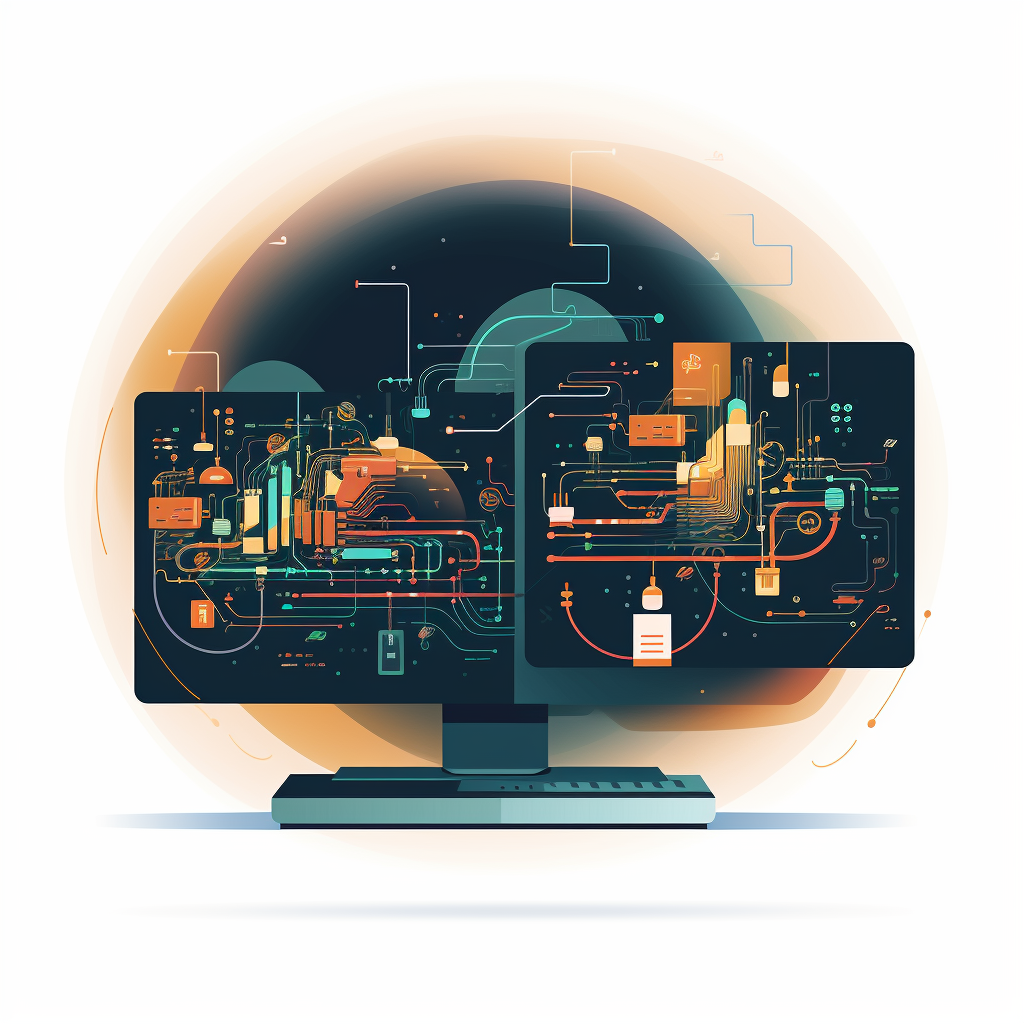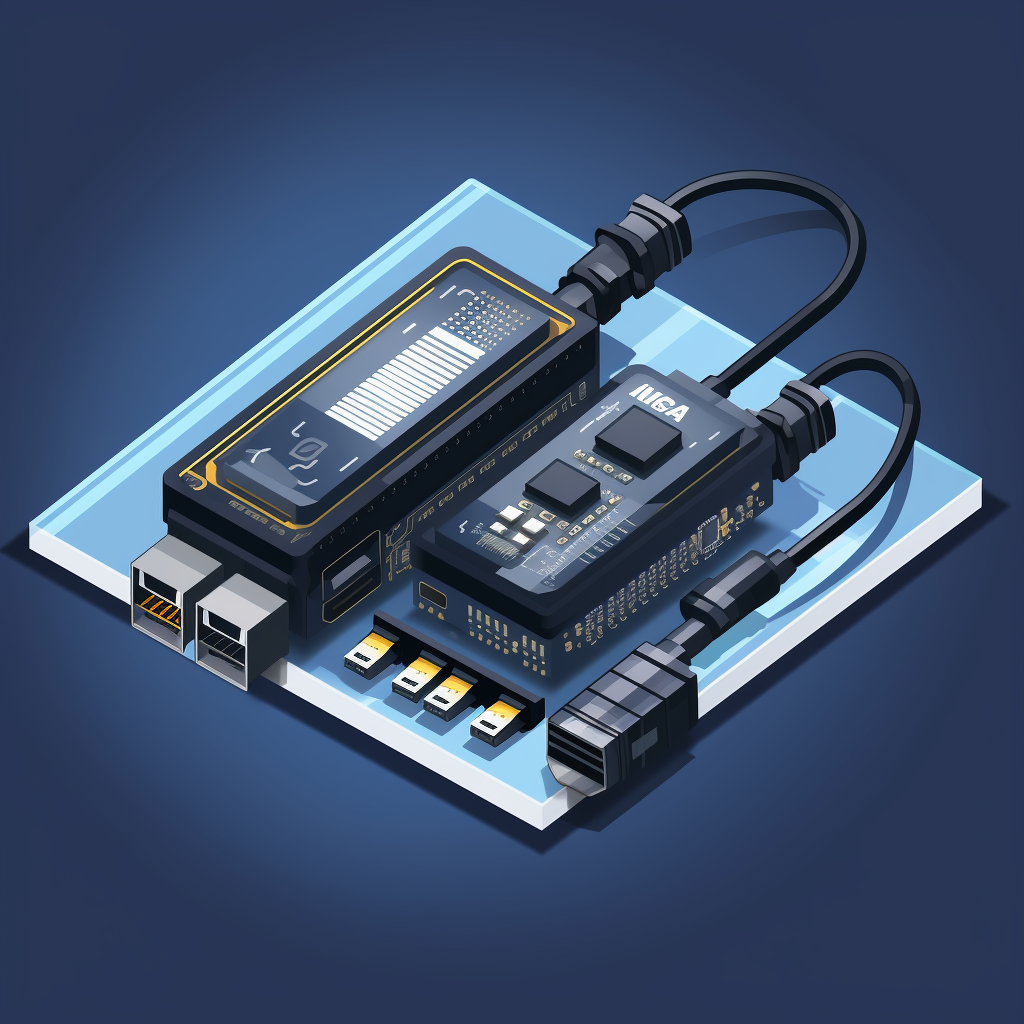Contents
In the age of advancing technology, even the cables we often overlook can make a significant difference in our digital experiences. Whether you’re a gamer needing the highest frame rate, a designer dependent on color accuracy, or just an average user aiming to set up a home theater, the question inevitably arises: DisplayPort or HDMI?
This debate extends far beyond just tech enthusiasts; it has practical implications for businesses, educational institutions, and even home setups. Each cable type comes with its advantages and disadvantages, making one more suitable for certain situations than the other.
However, navigating the labyrinth of technical jargon and specifications can be overwhelming. It’s not just about connecting A to B; it’s about understanding how the nuances of these digital display standards can impact your experience.
That’s why this article aims to decode the complex relationship between DisplayPort and HDMI, offering you a comprehensive guide to make informed decisions. We will dissect their technical specifications, delve into their versatility and use-cases, consider future-proofing your setups, and discuss the budgetary implications of each.
Understanding DisplayPort: The Challenger
Developed by a consortium of PC and chip manufacturers, including the likes of HP and Dell, DisplayPort was introduced in 2006 as an alternative to the then already-popular HDMI. Despite its later entry, DisplayPort brought some innovative features to the table that set it apart.
Key Features:
- High Bandwidth: DisplayPort supports high-resolution displays with a remarkable amount of data throughput, making it suitable for professional-grade monitors where high data rates are essential.
- Daisy-Chaining: A unique feature called “Multi-Stream Transport” (MST) allows you to connect multiple monitors to a single DisplayPort output, a benefit often exploited in professional setups.
- G-Sync and FreeSync: For gamers, the support for adaptive sync technologies like NVIDIA’s G-Sync and AMD’s FreeSync ensures a smoother gaming experience.
- Audio Pass-Through: Like HDMI, DisplayPort also supports multi-channel audio pass-through, though it’s less commonly used for home theater setups.
- Locking Connector: DisplayPort cables have a locking mechanism that prevents accidental disconnections, a feature particularly useful in enterprise settings.
Limitations:
- Limited Consumer Electronics Support: You’ll rarely find DisplayPort on consumer-grade electronics like TVs and sound systems.
- Cost: High-end DisplayPort cables and adaptors can be more expensive, especially when requiring specialized features.
DisplayPort is often considered the underdog in the realm of digital display interfaces, but it shines in high-end computing environments, gaming rigs, and professional setups. Although it may not be as ubiquitous as HDMI, it often excels in situations requiring high data throughput or multi-monitor configurations.

The Dominance of HDMI: The Reigning Champion
High-Definition Multimedia Interface (HDMI) has been the go-to standard for consumer electronics since its inception in 2003. Developed by a consortium of major electronics manufacturers, including Sony, Panasonic, and Philips, HDMI has found its way into a wide range of devices—from TVs and laptops to gaming consoles and soundbars.
Key Features:
- User-Friendly: HDMI’s ease of use is one of its primary selling points. The plug-and-play nature of this interface makes it approachable even for those not particularly tech-savvy.
- CEC and ARC Support: HDMI also features Consumer Electronics Control (CEC) and Audio Return Channel (ARC), allowing for simplified device control and better audio handling, respectively.
- Widespread Adoption: Almost every TV, gaming console, and many laptops come with HDMI ports, making it extremely versatile and widely supported.
- 4K and Beyond: With the advent of HDMI 2.1, support for resolutions up to 8K and higher frame rates has become a reality, making it a future-proof option.
- Rich Audio Support: HDMI can transmit high-definition audio formats such as Dolby TrueHD and DTS-HD Master Audio, making it an excellent choice for home theater systems.
Limitations:
- No Daisy-Chaining: Unlike DisplayPort, HDMI doesn’t natively support connecting multiple monitors via a single output, though splitters and multi-port switches are available as workarounds.
- No Locking Mechanism: HDMI cables can sometimes become dislodged if the connected devices are moved, as they lack a locking mechanism.
HDMI has ingrained itself so deeply in consumer electronics that it’s often the first choice for general users. While it may not offer some specialized features that DisplayPort brings, HDMI wins in sheer ubiquity and user-friendliness.
Technical Specifications: A Side-by-Side Comparison
When choosing between DisplayPort and HDMI, the technical specs often become the deciding factor for many users. Below is a side-by-side comparison to help you understand how they match up in various categories.
Resolution and Bandwidth:
- DisplayPort 1.4: Supports up to 8K resolution at 60Hz, with a maximum bandwidth of 32.4 Gbps.
- HDMI 2.1: Also supports up to 8K resolution at 60Hz, with a maximum bandwidth of 48 Gbps.
Audio Features:
- DisplayPort: Supports up to 8 audio channels, but is less commonly used for transmitting high-definition audio formats.
- HDMI: Transmits high-definition audio formats like Dolby TrueHD and DTS-HD Master Audio, making it more suitable for home theater setups.
Adaptive Sync:
- DisplayPort: Supports both AMD’s FreeSync and NVIDIA’s G-Sync.
- HDMI: Newer versions (HDMI 2.1) also support adaptive sync technologies but are not as widely adopted in this regard.
Cable Length and Reliability:
- DisplayPort: Typically supports cable lengths up to 3 meters for full-feature support, with a locking mechanism for secure connections.
- HDMI: Supports longer cable lengths (up to 5 meters without a booster), but lacks a locking mechanism.
Connector Types:
- DisplayPort: Generally one type of connector, but mini DisplayPort options are available.
- HDMI: Multiple types, including standard, mini, and micro, allowing for a broader range of device compatibility.
Understanding these technical nuances can significantly impact your experience, whether you’re into gaming, content creation, or general media consumption. The choice may come down to specific needs that one interface addresses better than the other.

Versatility and Use-Cases: Where Each Shines
While the technical specs provide the raw data to differentiate between DisplayPort and HDMI, how do these factors translate into real-world usability? Let’s delve into some common scenarios where you might have to choose between the two.
Professional Workstations:
- DisplayPort: Often the preferred choice for graphic design, video editing, and other professional-grade tasks due to its high bandwidth and multi-monitor support through daisy-chaining.
Home Theaters:
- HDMI: Its widespread adoption in consumer electronics like TVs, soundbars, and Blu-ray players, coupled with superior audio capabilities, makes HDMI the go-to option for home theaters.
Gaming:
- Both: Gamers can benefit from either, depending on the specific requirements. DisplayPort’s adaptive sync features are more mature, but HDMI 2.1 is catching up, offering high resolutions and refresh rates.
Business Presentations:
- HDMI: Given its ubiquity, you’re more likely to find HDMI inputs in conference rooms and auditoriums, making it more practical for business presentations.
Laptops and Mobile Devices:
- HDMI: The smaller form factors of mini and micro HDMI are better suited for portable devices.
Digital Signage:
- DisplayPort: The ability to connect multiple displays via a single output through daisy-chaining makes DisplayPort ideal for digital signage setups.
Understanding the unique strengths of each interface in different use-cases allows you to make an informed decision based on your specific needs. There’s no one-size-fits-all answer; it depends on what you’re looking to achieve with your setup.
Future-Proofing Your Setup: Longevity and Adaptability
In a fast-paced world where technology continually evolves, future-proofing your digital setup is a wise strategy. But how do DisplayPort and HDMI fare in this regard? Let’s explore.
Upcoming Standards:
- DisplayPort 2.0: Expected to support up to 10,000 x 4320 resolution and significantly higher refresh rates, with a bandwidth capacity of 77.4 Gbps.
- HDMI 2.1a/b/c: While the details are scarce, incremental updates to HDMI 2.1 are expected, with improvements in dynamic metadata for HDR, enhanced audio return channel (eARC), and gaming-specific features.
Adaptability:
- DisplayPort: Its architecture is highly scalable, evidenced by its rapid iterations and features like daisy-chaining, making it adaptable for future innovations.
- HDMI: Given its broad industry support, HDMI is unlikely to become obsolete soon. However, its evolution is generally slower compared to DisplayPort.
Backward Compatibility:
- DisplayPort and HDMI: Both interfaces generally support backward compatibility, meaning newer versions will work with older ports and cables, albeit with some limitations.
Investment:
- DisplayPort: Given its rapid evolution and higher-end features, investing in the latest DisplayPort standard may offer better longevity for professional uses.
- HDMI: For consumer electronics and general media consumption, the slower evolutionary pace of HDMI means current standards are likely to remain relevant for longer.
When it comes to future-proofing, both DisplayPort and HDMI have their merits and challenges. DisplayPort seems poised for quicker adaptations to new technologies, while HDMI provides a stable, albeit slower-evolving, standard that is widely supported.
Making the Choice: Key Takeaways and Recommendations
After diving into the intricacies of DisplayPort and HDMI, the question remains: Which is the right choice for you? Here are some key takeaways and recommendations to guide your decision-making process.
For Professional Use:
- Recommendation: Opt for DisplayPort if you require higher bandwidth, daisy-chaining capabilities, or specialized adaptive sync features. It’s particularly suited for graphic design, video editing, and other data-intensive tasks.
For Home Entertainment:
- Recommendation: HDMI is almost universally supported across consumer electronics and offers robust audio features, making it the natural choice for home theater systems.
For Gaming:
- Recommendation: Both can serve you well, but check your hardware’s specific needs. If you have a high-refresh-rate monitor or are looking for specialized adaptive sync, DisplayPort might be the better choice. However, HDMI 2.1 offers similar features and is more common on newer consoles.
For General Use:
- Recommendation: HDMI’s widespread adoption makes it the more accessible and user-friendly option for everyday tasks and general media consumption.
For Future-Proofing:
- Recommendation: If you’re concerned about adaptability and future technological advancements, DisplayPort’s quicker innovation cycles might offer a better long-term investment. However, HDMI’s broad acceptance ensures it will remain relevant for many years.
Making an informed decision between DisplayPort and HDMI ultimately depends on your specific requirements, the devices you intend to use, and the features that are most important to you. By assessing your needs against the strengths and weaknesses of each standard, you can make a choice that will serve you well both now and in the future.


